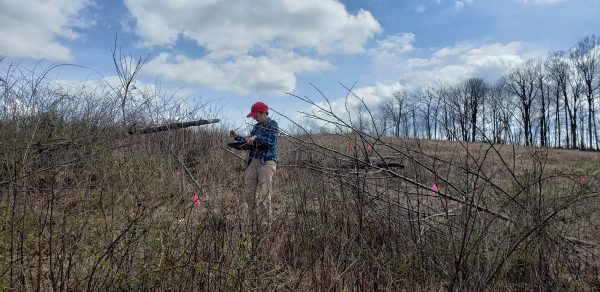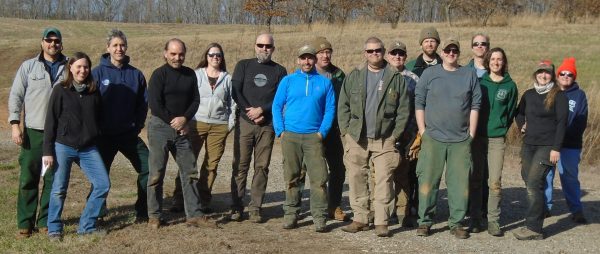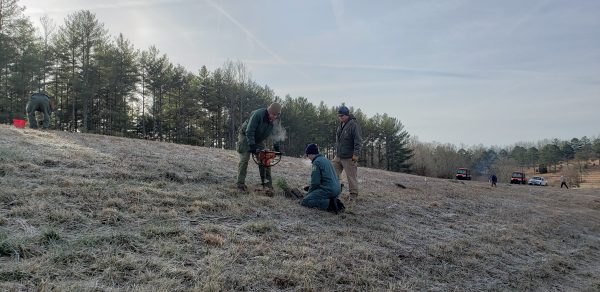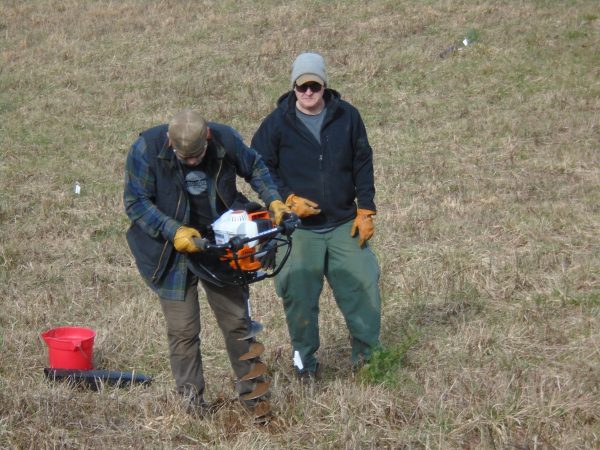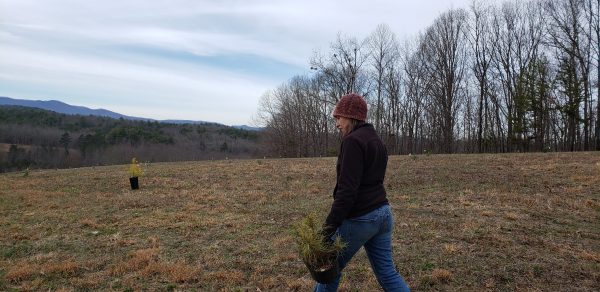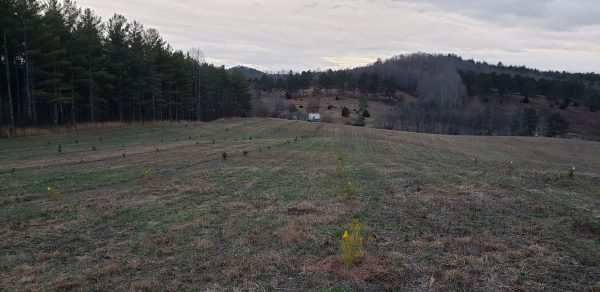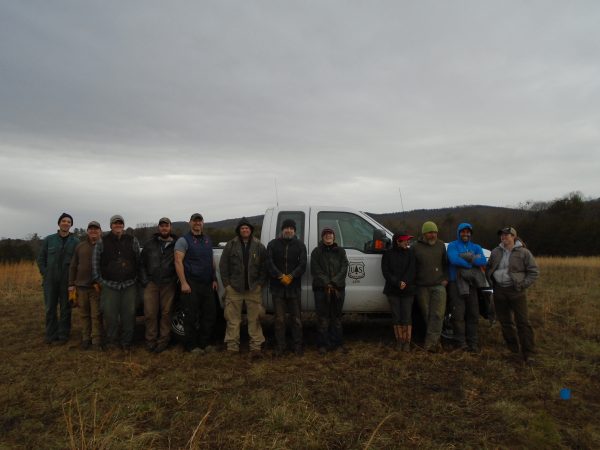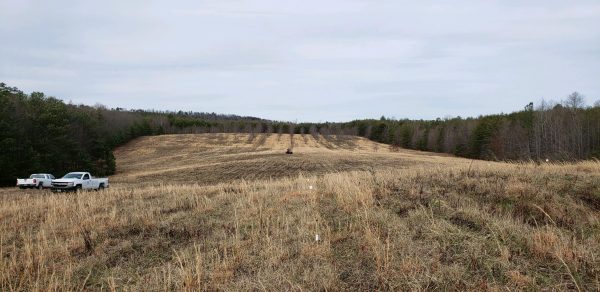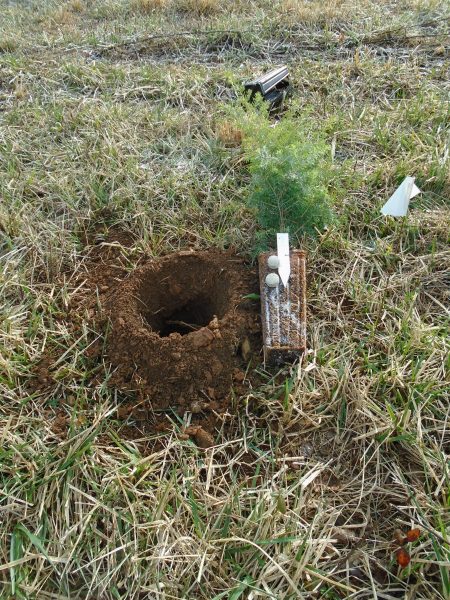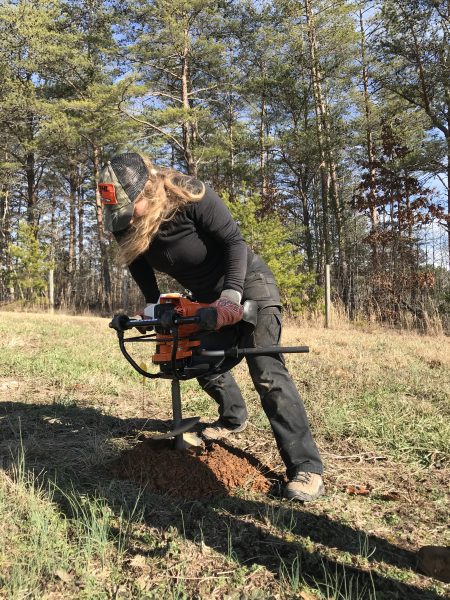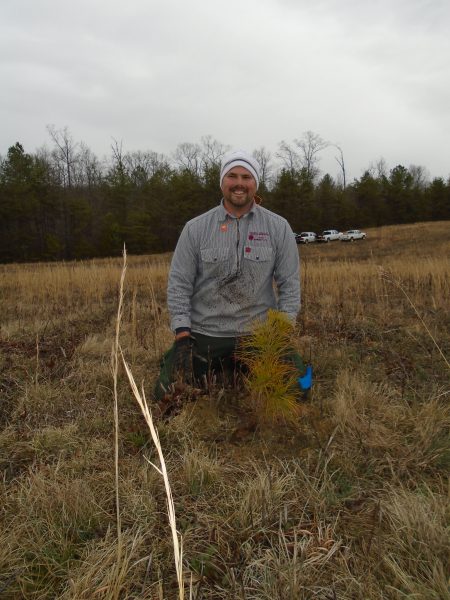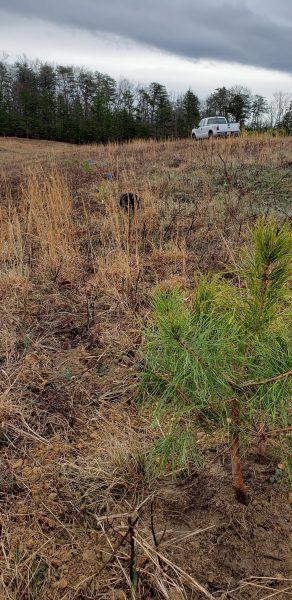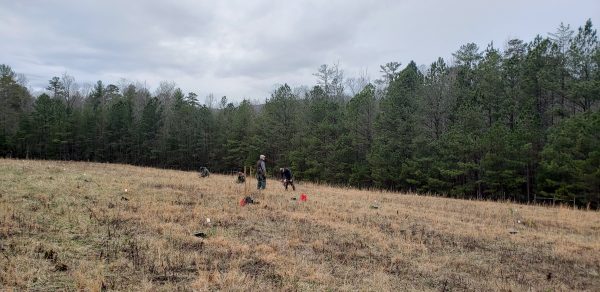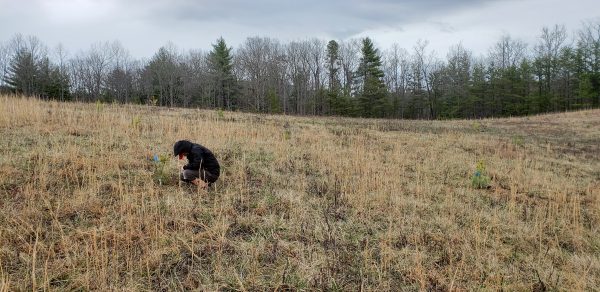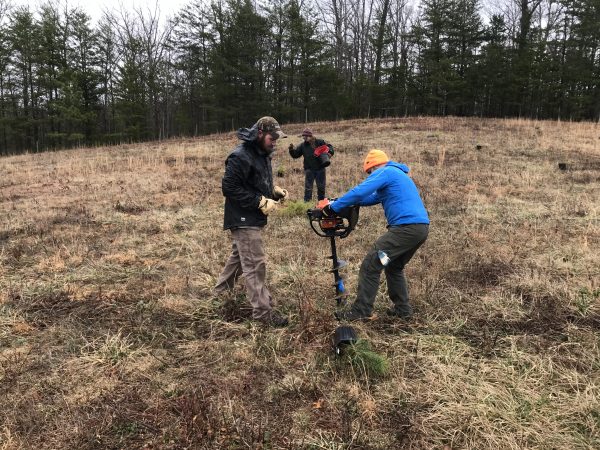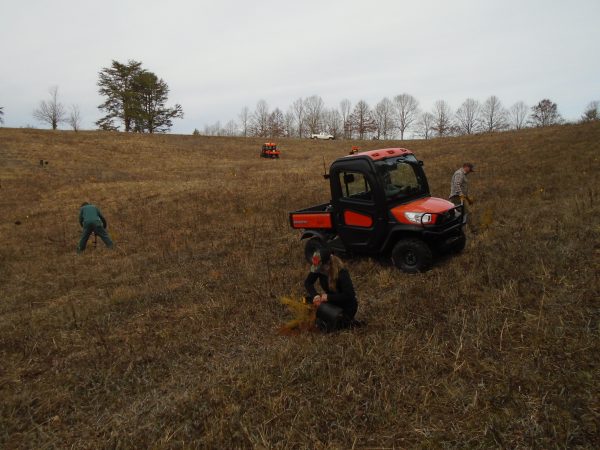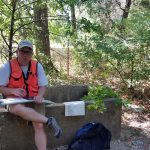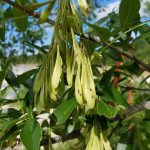New Carolina hemlock Orchard Established
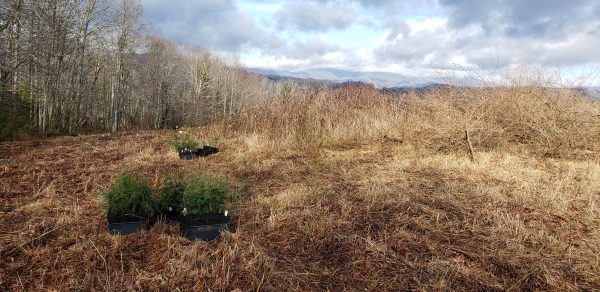
In early March of 2020 Camcore established a new Carolina hemlock orchard located just outside of Linville Gorge, NC. This 500 seedling orchard marks our third conservation planting of Carolina hemlock and the fifth domestic seed orchard established in 2020. After 17 years of working with domestic seed collections for imperiled species located across the eastern US, it is extremely rewarding to see a portion of this germplasm going back into conservation plantings. Many thanks are extended to the North Carolina Forest Service for both allowing us to establish this orchard on their property and for clearing the site prior to the planting. We also greatly appreciate the labor from the NC Bridge Crew in helping to plant the seedlings as well as several volunteers with the NC Hemlock Restoration Initiative. Without the assistance from these three groups this three day planting would have easily taken closer to three weeks.
At this point we are actively pulling more domestic seed from additional provenances and species with hopes to germinate it shortly. With these future seedlings our goal is to maintain momentum in establishing additional conservation seeds orchards with our cooperators in the US.
